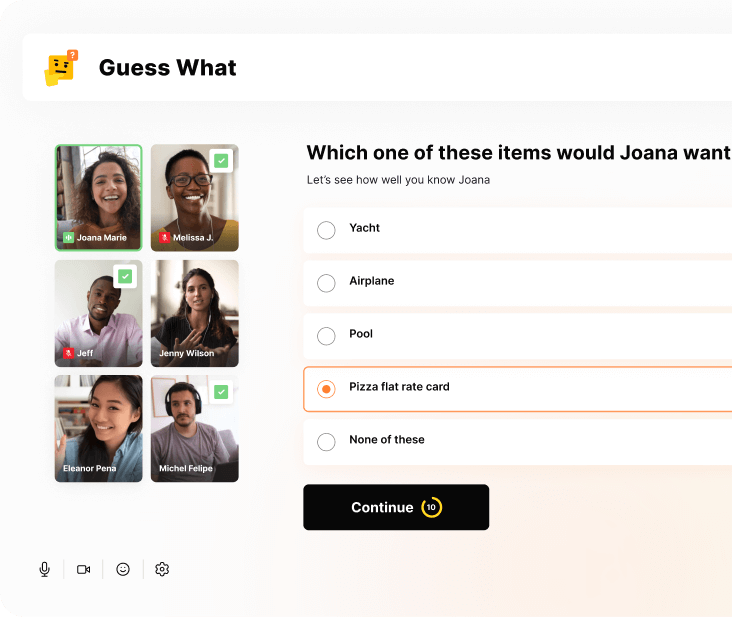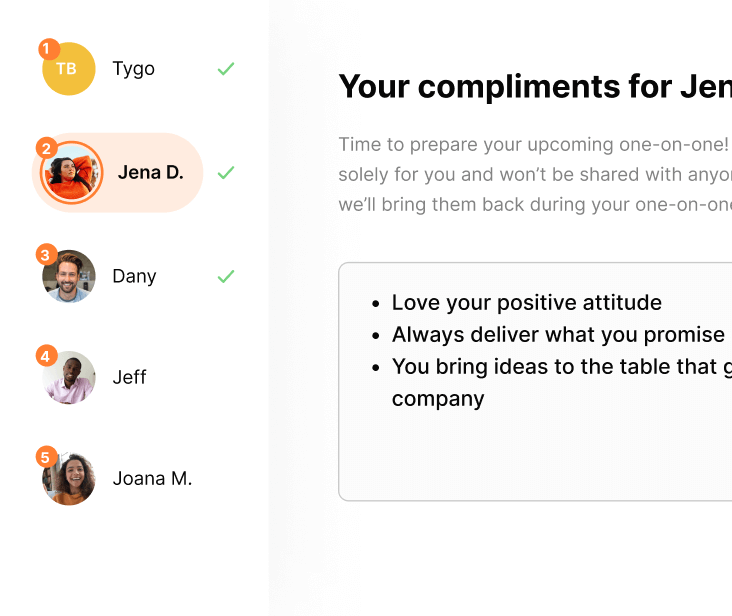Back to Blog
What is employee engagement and why does it matter?
You’ve heard the term ‘employee engagement,’ but you’re not quite sure what it means. Worse, you’re unsure if it’s impacting your organization and whether you need to do something about it!
The truth? Employee engagement impacts your company, whether you realize it or not. Keep reading to discover what it means and why it's important.
Looking for ways to manage your employee engagement? Head to our blog on the best employee engagement apps.
The definition of employee engagement
Employee engagement refers to how committed an employee is to an organization, on an emotional, behavioral, and intellectual level.
It reflects how employees feel about a company - from company culture to job roles to team members. And in turn, it reflects how an employee is likely to behave.
Engaged employees are more likely to be efficient, creative, and productive. They enjoy their work, are proud of the company they work for, and are motivated to deliver their best. Plus, they’re less likely to seek career opportunities elsewhere.
Employee engagement statistics show a direct correlation between employee engagement and a company's productivity.
By investing in employee engagement, you’re investing in improved business performance. And you'll increase employee retention.
3 types of employee engagement and how they’re impacting your organization
- Actively engaged employees are passionate about their work. They are excited about solving problems, even those outside of their remit. They are positive and proactive and inspire others to do their best.
- Not engaged employees fulfill their responsibilities but are less enthusiastic about their role. They think of their work as a way to receive their paycheck and nothing more.
- Actively disengaged employees are negative, resentful and can harm team dynamics. They are likely to underperform and can impact morale, bringing others' performance down too.
Share fun facts and bond with a team quiz
Have your participants choose from a list of questions they’d like their coworkers to answer about them, before watching as they guess the right answer.
01. Yes
share-fun-facts-and-bond-with-a-team-quiz

Run a guided recognition activity
Have your participants choose from a list of questions they’d like their coworkers to answer about them, before watching as they guess the right answer.
01. Yes
run-a-guided-recognition-activity

Organize a virtual cooking class
Hire a professional chef to help your team cook a delicious lunch or dinner. May be difficult for co-workers with families. To find providers and get tips, read our blog about virtual cooking classes.
02. No
organize-a-virtual-cooking-class

Hire a stand-up comedian
Have your participants choose from a list of questions they’d like their coworkers to answer about them, before watching as they guess the right answer.
02. No
hire-a-stand-up-comedian

No items found
No items found
Table of contents
You’ve heard the term ‘employee engagement,’ but you’re not quite sure what it means. Worse, you’re unsure if it’s impacting your organization and whether you need to do something about it!
The truth? Employee engagement impacts your company, whether you realize it or not. Keep reading to discover what it means and why it's important.
Looking for ways to manage your employee engagement? Head to our blog on the best employee engagement apps.
The definition of employee engagement
Employee engagement refers to how committed an employee is to an organization, on an emotional, behavioral, and intellectual level.
It reflects how employees feel about a company - from company culture to job roles to team members. And in turn, it reflects how an employee is likely to behave.
Engaged employees are more likely to be efficient, creative, and productive. They enjoy their work, are proud of the company they work for, and are motivated to deliver their best. Plus, they’re less likely to seek career opportunities elsewhere.
Employee engagement statistics show a direct correlation between employee engagement and a company's productivity.
By investing in employee engagement, you’re investing in improved business performance. And you'll increase employee retention.
3 types of employee engagement and how they’re impacting your organization
- Actively engaged employees are passionate about their work. They are excited about solving problems, even those outside of their remit. They are positive and proactive and inspire others to do their best.
- Not engaged employees fulfill their responsibilities but are less enthusiastic about their role. They think of their work as a way to receive their paycheck and nothing more.
- Actively disengaged employees are negative, resentful and can harm team dynamics. They are likely to underperform and can impact morale, bringing others' performance down too.
Understanding what drives employee engagement
According to a recent study of 1.8 million employees, the top drivers of employee engagement for 2022 are:
- Flexible working - the opportunity for employees to have control over work-life balance. This includes flexibility to work when and where they want.
- Growth - the chance for employees to engage in personal and professional development.
- Belonging & diversity - the need for employees to feel a sense of belonging and inclusion while at work. Whatever their age, race, gender, sexuality, disability, or identity.
- Environmental, social & governance - the knowledge that employees are working for an organization aligned with their values.
Underlying each of these drivers? A desire to feel valued and heard.
Employees want to know that both their concerns and aspirations are listened to. And that employers will respect, and act on, issues that matter to them.
For more on these key drivers and how to act on them, read our article on research-backed drivers of employee engagement.
How to improve employee engagement of your teams
1. Check in with individuals
To improve employee engagement, you first need to know where your employees are at. How do they currently feel about their job? And how are they performing?
You can choose an employee satisfaction survey to gauge employee contentment levels or try a virtual employee engagement platform for a more thorough look at employee engagement levels across the board.
2. Create the right environment
A safe environment (physically and psychologically) is necessary for all employees to do their best work. Look at your current workspaces. Do your employees have everything they need to feel secure? And do they have the tools to work to their highest standards?
Don’t forget about remote workers. Do they have the environment and resources they need? If not, think about how you can support them in obtaining them.
3. Communicate, communicate, communicate
Communication is key to meeting the needs of your employees and helping them feel valued. Aside from sending out employee satisfaction surveys, make sure you have ways for employees to provide feedback and share ideas all year round.
Increase feedback by ensuring an option for anonymous contributions.
4. Nurture employee connection
Make sure your teams are well connected. Do they have the tools to make contact efficiently, even when working remotely? And are they given the time & resources to build relationships that will aid on-the-job communications?
Dedicated team-building sessions provide the ideal opportunity for this. Helping forge connections in a fun and informal way.
If you’re ready to build those bonds, we’ve put together a list of free virtual team building activities to try with your team. Or get started right away with Gomada’s pre-built activities you can try for free.
5. Act on feedback
The number one way to improve employee engagement? Listen to your employees and act on the feedback they give you. What do they need to do better work?
If you’re looking for software to take the hard work out of collecting feedback, we recommend exploring employee engagement solutions.
For more on how to get your teams engaged in your organization, have a look at how Gomada can help through fun, science-backed teambuilding online.
Subscribe to get our latest updates
Subscribe to get our latest updates






